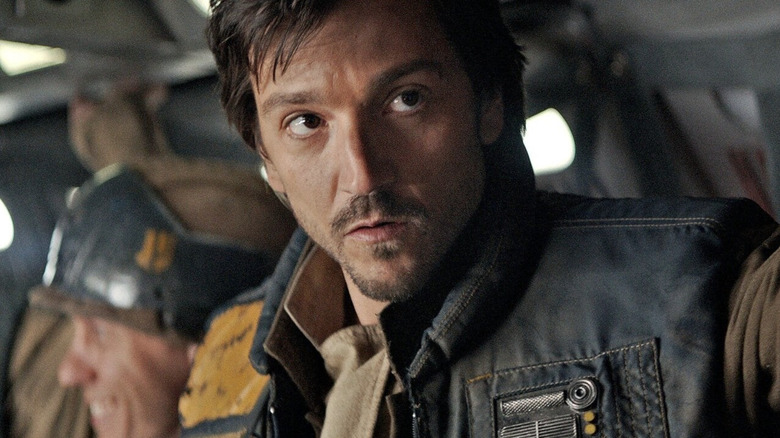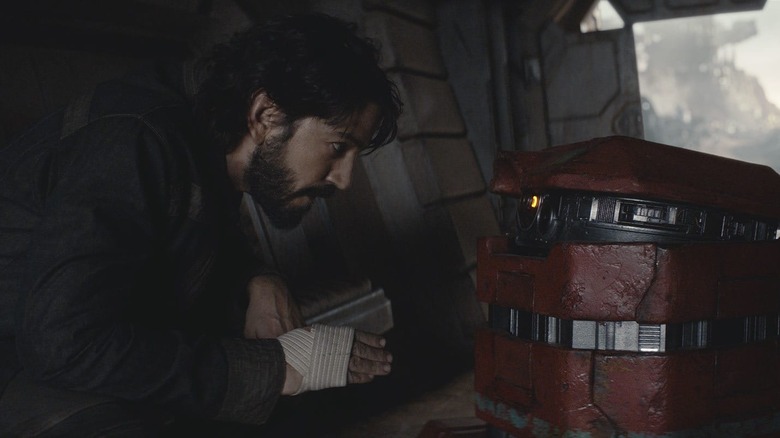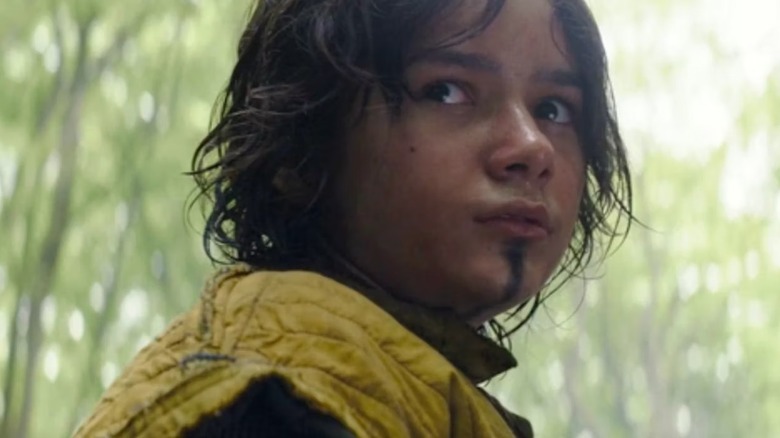Andor Creator Tony Gilroy Knew Cassian's Backstory Needed To Explain His Accent
One thing that set Diego Luna's portrayal of Cassian Andor apart from other characters in 2016's "Rogue One: A Star Wars Story" was the fact that Luna retained his Mexican accent to play the captain from the Rebel Alliance, adding a culturally specific flair to Luna's performance and imbuing the universe with a unique Latino character. Though the "Star Wars" sequel trilogy tried diversifying the franchise, it, unfortunately, failed to offer depth and substance, sidelining John Boyega's Finn as well as Kelly Marie Tran's Rose.
Thankfully, "Andor," the prequel Disney+ series that follows Cassian Andor's journey from a disillusioned man to the passionate and morally ambiguous captain of the Rebel Alliance we meet in "Rogue One" made some efforts to improve the representation in the "Star Wars." With Luna attached to the project as a producer in addition to reprising his film role, he and showrunner Tony Gilroy made it a priority to maintain Cassian's identity as an immigrant and a refugee a significant part of his story.
During this year's "Star Wars Celebration," Gilroy, Luna, and other cast and crew took over the Celebration stage for a behind-the-scenes panel on the making of "Andor," in which Gilroy explained that's one of his main driving forces that informed how he approached writing the show was started with a deceptively simple question he desired to see answered. Gilroy said, "I wanted to explain his accent."
Cassian's journey is intrinsically tied to his surroundings
In the first few episodes of "Andor," we quickly find out that Cassian was initially born on planet Kenari under the name "Kassa" before he arrived to Ferrix, an industrial planet that he retreats to with his surrogate family after Kenari was taken under Imperial control.
When asked about the process of designing Ferrix, Gilroy explained that he wanted to maintain a thematic relationship between Cassian's character and the space around him. "[Production designer Luke Hull] will tell you, I had this cocktail napkin drawing of Ferrix, it was one of the first things that we traded. My version, it looks like one of those Tolkien maps ..." Gilroy explained. "The setting would become a character of the show, and that became very helpful. Because what Cassian is going through is what Ferrix is going through."
Though the concept of race and ethnicity are never explicitly factored in or discussed in the canon of "Star Wars," Luna and Gilroy were able to allegorically incorporate parts of Luna's personal experience as a Mexico-born actor/filmmaker working in Hollywood. "Andor" essentially tells the story of an immigrant and his journey to Ferrix as a refugee from Kenari, who then experiences displacement as Ferrix surrenders under Imperial control. Cassian's gradual radicalization into rebellion is also a search for identity and belonging.
'You bring what you are, and you play with what you have'
Back in November 2022, /Film's own Ethan Anderton interviewed Diego Luna for season 1 of "Andor," in which Luna explained what his casting represents and why Hispanic representation matters to him:
"I think by hiring me, they made the choice of making me a part of it. By hiring me, since 'Rogue One,' I bring something very specific to this role. I bring a very specific accent, very specific background, and a way to see the world, because you can give the same line to 20 actors, and it's going to sound very different. There's no one that is going to sound the same as others, because you bring what you are, and you play with what you have. When you refer to something, you're clearly picturing an image, and it's an image that you were exposed to. No one else can do it the way you do it. So I think that obviously is there."
During Lucasfilm's studio showcase, it was announced that season 2 of "Andor" has begun production and is currently anticipated to arrive in August 2024. Season 2 will also be the last season of the series, with a final shot that will lead directly into the events of "Rogue One," focusing on Cassian's final transformation into the man we met in the 2016 film. While his fate is set in stone, it's a rare opportunity to see a character like Cassian be written with his race and culture in mind, and we're excited to see how that will continue to develop in the future.


